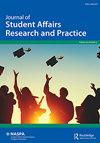社会/传统媒体对政治两极分化的影响
IF 0.8
Q3 EDUCATION & EDUCATIONAL RESEARCH
Journal of Student Affairs Research and Practice
Pub Date : 2023-05-31
DOI:10.47611/jsrhs.v12i2.4296
引用次数: 0
摘要
人们普遍认为,美国社会的政治两极分化正在加剧,这通常归咎于高度党派化的传统媒体(如电视新闻频道),以及作为政治观点主要影响因素的社交媒体回音室的出现。在本文中,我们通过模拟研究了传统媒体和社交媒体对社会政治极化的影响。这些模拟研究了当一个具有正态分布的单极政治观点的人群暴露在支持非常不同类型政治观点的社会/传统媒体中时会发生什么。我们的模拟表明,人口中的政治两极分化深受媒体所支持的政治观点的影响。如果媒体在政治观点上主要是单极的,那么民众在政治上最终也会成为单极的。另一方面,如果媒体在政治上两极分化,那么民众最终也会在政治上两极分化。有趣的是,模拟显示,如果回音室严格显示与用户当前政治观点相匹配的内容,社交媒体回音室可以消除党派传统媒体的两极分化影响。然而,如果社交媒体回音室让用户接触到极端的政治观点,那么最初政治观点单极的人群最终会看起来像两个拥有截然不同政治中心的不同人群。本文章由计算机程序翻译,如有差异,请以英文原文为准。
Impact of Social/Traditional Media on Political Polarization
There is a common perception that political polarization is increasing in American society and the blame is often assigned to highly partisan traditional media (e.g., TV news channels) and the emergence of social media echo chambers as the major influencers of political opinion. In this paper, we examine the impact of traditional and social media on political polarization in society via simulations. These simulations examine what happens when a population with normally distributed unipolar political views is exposed to social/traditional media espousing very different types of political views. Our simulations reveal that the political polarization in a population is deeply affected by the political views espoused in the media. If the media is primarily unipolar in terms of political views, the population ultimately become politically unipolar as well. On the other hand, if the media is politically bipolar, the population ultimately becomes politically bipolar. Interestingly, the simulations reveal that social media echo chambers can undo the polarizing impact of partisan traditional media if the echo chambers strictly show content matching the current political views of the users. However, if social media echo chambers expose the users to extreme political views, a population that is initially unipolar in political views will ultimately look like two different populations with very different political centers.
求助全文
通过发布文献求助,成功后即可免费获取论文全文。
去求助
来源期刊

Journal of Student Affairs Research and Practice
EDUCATION & EDUCATIONAL RESEARCH-
CiteScore
2.40
自引率
9.10%
发文量
50
期刊介绍:
The vision of the Journal of Student Affairs Research and Practice (JSARP) is to publish the most rigorous, relevant, and well-respected research and practice making a difference in student affairs practice. JSARP especially encourages manuscripts that are unconventional in nature and that engage in methodological and epistemological extensions that transcend the boundaries of traditional research inquiries.
 求助内容:
求助内容: 应助结果提醒方式:
应助结果提醒方式:


